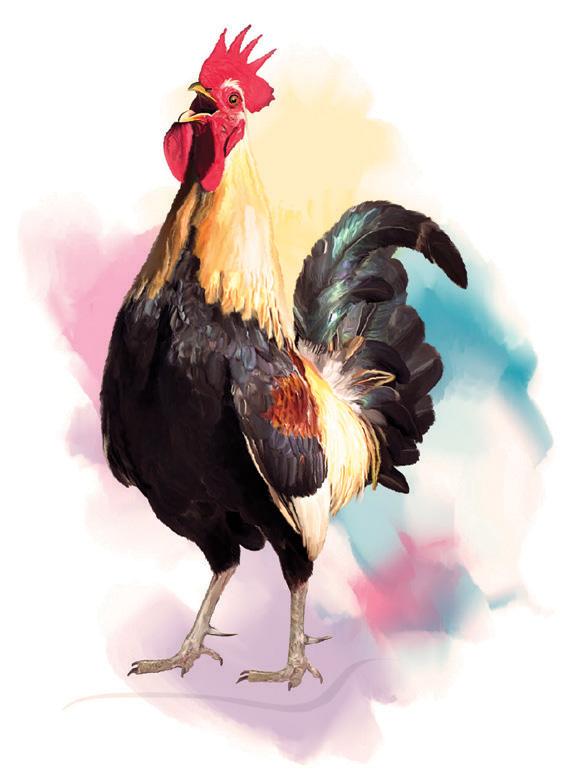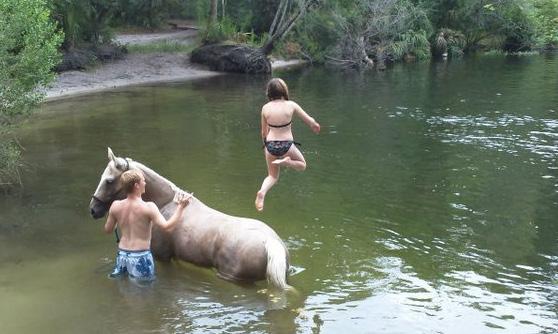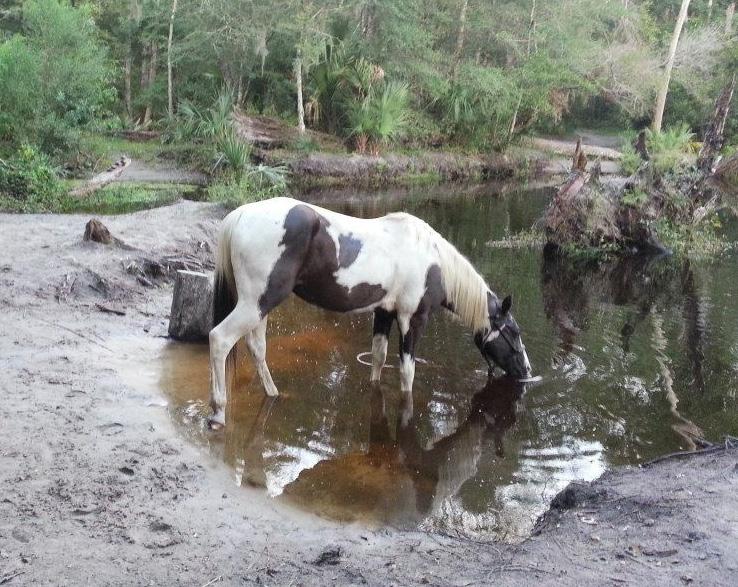
14 minute read
HEMP GETS HOT
from Natural Awakenings: Alachua, Citrus, Marion, Sumter Co & The Villages, Florida
by Natural Awakenings - Alachua, Citrus, Marion, Sumter Co & The Villages, Florida
HEMP GETS HOT Meet the Hardest Working Plant on the Planet
by Julie Peterson A crop that was illegal in U.S. soil for more than half a century is now reaching for the sun. Industrial hemp, the low- or no-THC cousin to marijuana, has created high hopes among farmers, agricultural researchers, manufacturers and consumers. By 2019, America had become the world’s thirdlargest producer, behind Canada and China, where it’s been cultivated for 8,500 years. “It’s the fastest-growing ag industry that we’ve ever seen,” says Tara Valentine, hemp specialist at the Rodale Institute, in Kutztown, Pennsylvania. Since hemp’s inclusion in the 2018 Farm Bill, Rodale’s hemp web page hits have grown 10-fold. Better Products All parts of the hemp plant are useful in multiple ways, and hemp has applications in textiles, construction, bioremediation, technology, nutrition and health, including cannabidiol (CBD). The seeds are rich in protein, essential fatty acids and vitamins. They can be eaten, ground into flour or pressed for oil that is used for cooking or in body care products. The stems undergo decortication to separate the long outer fibers (bast) from the short inner fibers (hurd). Hemp hurd makes extremely durable hempcrete for construction, absorbent and dust-free animal bedding or pellets for heating stoves. An exponential rise in the use of hemp is expected because it can replace products made from paper, wood, plastic, cotton and fossil fuels.
Advertisement
“Hemp fiber is going to dominate the market once we get to the full manufacturing potential,” says Erica Stark, executive director of the National Hemp Association, in Washington, D.C.
The first introductions consumers can expect include hemp paper products, such as plates and toilet paper, and biodegradable hemp bioplastics like cutlery and cups. Construction materials and other products are expected to quickly follow. Environmentally Friendly The Institute of Papermaking and Printing, at the Technical University of Lodz, Poland, did a 2015 study comparing making paper from wood to making it from Right now, it’s the Wild West of agriculture. ~Dustin Enge
hemp. Among the findings: hemp takes four months to grow, while trees need 20 to 80 years. An acre of hemp can produce four or more times as much paper as an acre of trees. Hemp paper doesn’t need toxic bleaching and can be recycled twice as many times. Other studies concur.
Paper without deforestation would be a major benefit, but it’s a minor job on hemp’s profound résumé. “Hemp needs to be a part of every climate change conversation, not only because it sequesters huge amounts of carbon during cultivation, but also because construction products made out of hemp will continue to sequester carbon for up to 100 years,” says Stark. Hemp could also help save the depleted soil on U.S. farmland that has been destroyed by tilling and synthetic fertilizers. “We have to rebuild the soil by putting carbon back in and increasing organic matter,” says Valentine. Hemp does this with a massive root biomass that breaks up compacted soils, improves water infiltration and reduces runoff and erosion. Fast-growing hemp naturally suppresses weeds, needs no pesticides and

CROW YOUR BUSINESS! Advertise With Us To Reach Your Target Audience. 352-366-0088
isn’t picky about soil, water or latitude. By comparison, cotton is water-intensive and uses 25 percent of the world’s pesticides. Hemp needs to be a part of every climate change conversation, not only because it sequesters huge amounts of carbon during cultivation, but also because construction products made out of hemp will continue to sequester carbon for up to 100 years. ~Erica Stark
Income for Farmers Used in crop rotation, hemp’s soil-enhancing qualities can increase profits on subsequent crops. While cover crops don’t usually have return value, hemp provides additional revenue streams. But the revenue isn’t quite there yet, because the supply chain isn’t complete. Seed supply, farm equipment, education, processing facilities and manufacturers are all links that are developing simultaneously. “Fiber processing facilities will be available soon. Manufacturers are anxious to start incorporating hemp,” says Stark.
The lack of buyers isn’t deterring farmers. Neither are warnings that current harvesting equipment can spark disaster when hemp fiber wraps around rotating parts, heats up and combusts.
Dustin Enge, a third-generation farmer in Prairie du Sac, Wisconsin, started Honey Creek Hemp in 2017. He planted six acres of hemp. “I think it’s a long-term viable commodity for farmers. Right now, it’s the Wild West of agriculture. Everyone is trying different things,” says Enge, who modified a harvester for hemp. “I spent about two hours harvesting and 20 hours torching the fiber off my equipment.” Even so, he will plant more acres when he knows it will sell.
Behold the sprouting of the hemp industry as an ancient plant takes root in the modern world.
Julie Peterson writes from rural Wisconsin and can be reached at JuliePeterson2222@ gmail.com.

Take the Plunge with Horseback River Riding
Water and animal enthusiasts can feel the rush of Florida’s up-close encounters by swimming with dolphins, manatees, sharks and astonishingly, horses. Labeled the “Horse Capital of the World”, Marion County boasts more horses than any other county in the nation, so it should come as no surprise that these maned mammals are making a splash with river rides on the outskirts of the Ocala National Forest. Although they are known to roam farm fields and race tracks, swimming may seem like an atypical action for a horse. “Horses are actually just like other animals or people,” reveals Tina Rhoads, owner of Makin’ Tracks Trail Rides. “They have emotions; they think, they feel and they have varying likes and dislikes, including water.” Established 15 years ago as a result of a passion project, Makin’ Tracks Trail Rides is a family-owned, self-funded equine rescue, and she is the tour guide operator. “I took in stray horses just like how people take in stray cats, and I found myself with too many. So I started the company to support the rescues,” Rhoads explains. The current herd embraces 11 rescues, although that number fluctuates as Rhoads adopts displaced horses in and out.
Makin’ Tracks leads standard oneand two-hour trail rides all year long, but the company’s most popular outings are dubbed River Rides, which are best by Nancy DeVault
enjoyed during the spring and summer. These unique, three-hour excursions encompass a trail ride out, swimming with horses and a return ride, with each part averaging one hour.
Participants arrive to the Makin’ Tracks’ farm grounds to receive basic riding instructions and get acquainted with the horses and guides. Then riders trek along a sandy path on the Marjorie Harris Carr Cross Florida Greenway, a lush 110-mile corridor spanning the state from the Gulf of Mexico to the St. Johns River. The Greenway offers a hospitable landscape for horseback riders to marvel at wildflowers and for those with eagle eyes, wild critters such as black bears, deer, otters, snakes and colorful birds soaring above in the blue sky.
The excitement intensifies upon arrival at the Ocklawaha River, flowing along the muddy western border of the Ocala National Forest. During this stopover, participants can enjoy riverside relaxation and recreation underneath ancient cypress trees. “Our guides untack the horses down to bareback for those that want to swim,” Rhoads says. Surf-savvy riders may take several whirls in the water on the horses and even dare to cannonball off for gleeful gushes.
Customers of all skill levels come from near and far to saddle up and suit up. “We have a combination of locals and visitors from
all over, including abroad,” notes Rhoads.
Patron Lynn Hope says the River Ride was “one to tick off the bucket list,” especially because nothing like it is available back in her hometown of East Yorkshire, England. As an experienced rider, she was thrilled to immerse herself in the one-of-a-kind venture alongside her daughter-in-law while vacationing last spring. “It was a brilliant adventure, even though I couldn’t stay on [the horse in the water] for long,” Hope shares. She says the two guides were fun, laughing and encouraging the entire time, and the extraordinary experience rekindled her daughter-in-law’s passion for riding. Ashley Kelleher, of Reading, Pennsylvania, also credits the friendly guides with sparking her newfound interest. “I had never been on a horse before but, trust me, I have since and will continue to,” she affirms. On a trip to visit her Gainesville-based family last fall, Kelleher opted for a standard trail ride, but happily dove deeper with the help of Mother Nature. “It had rained, so the trail was very watery. There was a part where the river overflowed, and so the water was almost up to the horses’ knees as they walked through it,” recalls Kelleher, who is planning on another “relaxing” ride with Makin’ Tracks.
Seasonal River Rides cost $100 per person, with bookings opening up as soon as the water is warm enough and when hunting season wraps, says Rhoads. Riders should provide their own helmets (children younger than 16 years of age are required by Florida law to wear protective headgear); there are no changing rooms along the river bank; and packed picnics are permitted.

SATURDAY, MARCH 7 1st Annual Harness Party –1-4pm. Free. Watch as dozens of horses get harnessed up for the Parade of Breeds Downtown. Enjoy an extended Saturday Market, drinks, music and food. Ocala Downtown Market, SE 3rd St, Ocala. 352-629-8051. OcalaDowntownMarket.com. The Horse Capital Parade by Live Oak International – 4-6:30pm. Free. Community parade to welcome the Live Oak International riders and drivers, bringing all breeds and disciplines together. Downtown Ocala, SE 3rd St, Ocala. 352-629-8051. OcalaCEP.com.
SUNDAY, MARCH 8 Southeast Baroque Rated Working Equitation Show –8am-5pm. B-Rated Working Equitation Show with WE Judge Michael Vermaas. Intro through Advance levels and all phases. Working Equitation is for all breeds. Florida Horse Park, 11008 S Hwy 475, Ocala. 352-317-6113. SoutheastBaroque.com.
FRIDAY, MARCH 13 Ocala ll Horse Trials – Mar 13-15. 8am-5pm. Registration required. Running an A/I and Full 3-Phases Intermediate-BN, including modified. Florida Horse Park, 11008 S Hwy 475, Ocala. 352-307-6699. FlHorsePark.com.
SATURDAY, MARCH 14 Competition Prep Video Review MiniClinic –8am-1pm. $75-$150. Hone your skills as you prep for any horse show competition. Led by Cyril Pittion-Rossillon’s trained eye. Palm Equestrian Academy at Fox Grove Farm, 9445 NW 60th Ave, Ocala. 352-629-3310. LynnPalm.com.
MONDAY, MARCH 16 75th Anniversary FTBOA Horse of the Year Emerald & Gold Gala –5:30-9:30pm. $125-$150. Honoring champion thoroughbred horses. Florida Thoroughbred Breeders’ and Owners’ Association, 801 SW 60th Ave, Ocala. 352-629-2160. FTBoa.com.
THURSDAY, MARCH 19 No Muscle, No Movement-Educational Talk & Demo –5-8pm. Free. Susan Kasmin of Connecticut Equine Therapy, LLC is offering an educational talk and demonstration on equine muscles. Learn basic muscle anatomy, large muscle groups, and how hoof confirmation can affect the horses poster and range of motion. Ocala’s Farrier Supply, 1211 NE 17th Rd, Ocala. 352-456-7888. OcalasFarrierSupply.com.
FRIDAY, MARCH 20 Special Olympics 2020: Florida State Equestrian Championships– Mar 20-21. Free. Come cheer on these athletes as they compete in the State Equestrian Championship games. Grand Oaks Resort, 3000 Marion County Rd, Weirsdale. 352-750-5500. Tickets: GrandOaksTickets.com. GrandOaksResort.com.
SATURDAY, MARCH 21 Cows! Cows! Cows! –9am-5pm. Free. Learn to work with cattle to improve your horsemanship. Whether you need to expose your horse to build confidence or have a meaning for what you are asking your horse to do, cattle work is a great way to do it. Pear Tree Ranch, 5089 E Hwy 316, Citra. 630-220-7107. JakesPearTreeRanch.com. Famous Horsey Yard Sale – Mar 21-22. 6:30am1:30pm. $15 per car. The horse lovers candy store. Multiple vendors, food and drinks. No reservations, first come, first served. Tack Shack of Ocala Inc, 481 SW 60th Ave, Ocala. 352-873-3599. TackShackOcala.com.
FRIDAY, MARCH 27 Southeastern Pro Rodeo –7:30-9:30pm. $7-$35. Saddle and bareback bronc riding competitions, tie down roping, steer wrestling, team roping, barrel racing and eight seconds bull riding. Southeastern Pro Rodeo, 2200 NE Jacksonville Rd, Ocala. OcalaRodeo.com.


Makin’ Tracks Trail Rides is located at 15901 NE 137th Ct., in Fort McCoy. For more information, call 352-342-8891 or visit OcalaTrailRides.com.

Horticulturists at Wilmot Botanical Gardens, in conjunction with The University of Florida (UF) College of Medicine, are proving that greenhouses can fight the blues and build self-worth. Research shows gardening decreases stress and depression symptoms, and also boosts balance, coordination, muscle strength, motor skills, mental clarity and a sense of accomplishment.
The terms horticultural therapy and therapeutic horticulture are often used interchangeably, but UF Director of Therapeutic Horticulture Leah Diehl clarifies that the approaches are slightly different. While both employ stimulating, plantbased activities, horticultural therapy, as defined by American Horticulture Therapy Association (AHTA), is typically a prescribed treatment facilitated by a registered horticultural therapist that tracks individualized goals and achievements; whereas therapeutic horticulture, like at Wilmot Botanical Gardens, is implemented with less stringent, group-based objectives.
The therapeutic horticulture program began serving veterans in 2012 and grew to include other populations with special needs such as addiction, autism spectrum disorder (ASD), bipolar disorder, cancer, developmental delays, depression, movement disorders, renal disease, spinal cord injury and stroke, in addition to affiliated caregivers. Thanks to the diverse benefits of gardening, participants of varying abilities may cultivate physical, emotional and spiritual gains. Groups comprised of two to 15 people meet for one-hour sessions on a weekly basis. Programs feature three components: traditional horticulture deeds (planting), crafts using plant materials and sensory stimulation (citrus tastings). Private funding and grants typically determine specific special needs emphases. The therapeutic horticulture program is currently facilitating a cancer support group, an addiction group, two veterans groups (one exclusive to women), an alumni assembly open to all former participants regardless of special needs and a horticulture tutoring program for individuals with ASD. While precise instruction and application differs for each group, all have a common theme of connecting with plants and nature to enhance quality of life.
“I have overarching goals for any group that I work with that I think are important and at the core of horticulture therapy. One is that we’re helping individuals rebuild their self-esteem,” says Diehl. “I have found that some of the people that we work with, because of their disease or disability, [feel they] have lost the opportunity to contribute in some way.” She explains that the program affords purpose and creates valuable outcomes both within the participant and inside the greenhouse.
Diehl also strives to foster a sense of community. “Many of them have been isolated because of their diseases or disabilities and they may not have social interaction [elsewhere],” she says. “We’re helping them feel they belong.” Plus, she empowers by Nancy DeVault
participants with a sense of ownership, something that especially resonates with partakers battling addiction.
“Leah gives them a few different options on what they can do which is nice because, usually, our program [treating people with addiction] is regimented,” says Katie Walker, a recreational therapist at the UF Health Florida Recovery Center, of her recovery-oriented patients. Since 2016, the center has taught patients that horticulture can serve as a positive coping mechanism and sober leisure activity. “Because we are a production-oriented greenhouse, the participants feel needed; and since something new is always growing, we decide together what to work on,” says Diehl, who has an affinity for experimenting with unusual plants like the desert rose to deepen engagement.
Walker says the effects of being in the serene setting are fast-acting. “It’s exciting to see from pre-session to post-session how much brighter and more positive the patients are,” she shares. Hoping to stretch that optimism beyond the garden space, patients get to make and take home succulent arrangements. “It teaches them to care for the plant just like they should care for themselves,” Walker explains about the behavior lesson.
While the addiction group hones in on healthy hobbies, young adults with ASD dig into life skills and workplace potential. “Aside from the plant work, we focus on both hard and soft job skills like problemsolving, communicating with co-workers and workplace attire and hygiene,” Diehl says. For the past three years, Dr. Charlie Guy, professor emeritus in the UF Department of Environmental Horticulture, has led the Autism Spectrum Disorder Job Skills training program with a goal to teach students about horticulture and prepare them for the Florida Nursery, Growers and Landscape Association (FNGLA) Certified Horticulture Professional designation exam. “It provides a professional credential that demonstrates a level of horticulture knowledge in general and aspects specific to the state of Florida,” says Guy. “It’s a pathway to gainful employment and a more independent lifestyle.” Although the program is not college credited, Guys says the challenging syllabus is equivalent to that of two school semesters. Students









